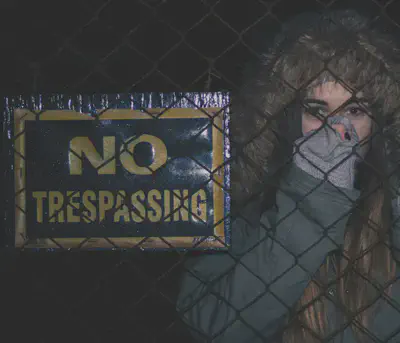Paranoid Personality: The Post-Pandemic Narcissist?
Unlike Narcissistic Personality Disorder, Paranoid Personality Disorder isn’t talked about much, and there’s definitely not as much research on paranoid personalities in comparison to narcissism. Perhaps this is due to paranoid personalities’ tendency to avoid treatment because they can’t trust others. BUT post-pandemic, there has been a resurgence of paranoid personalities in clinical settings and in general. So, it’s actually something we need to talk about because paranoid personalities can be dangerous, and they can hide in plain sight.
Why You Need to Understand Paranoid Personality
Paranoid personalities are much more likely to be a danger to others than to themselves,1 mostly due to their main defense mechanism of projection. They want others to hold their pain, and they blame others for their own yucky stuff (e.g., “I’m not angry. You’re the one who’s angry”). They can move all around the drama triangle quickly and intensely: First they’re the victim…then they’re the villain, but also the victim…but they rescue you so they can’t be the villain… but obviously they’re the victim. This can happen all in the same breath. It can drive you insane and make you question reality. So, they are often cloaked as narcissists, but underneath their trenchcoat, there’s a fear of being destroyed (not the narcissistic fear of being exposed), which means they will attack first, so they are not attacked. It can be dangerous.
What is Paranoid Personality Disorder? (DSM-5-TR Criteria)
Paranoid Personality Disorder is in the odd and eccentric (Cluster A) category in the DSM, overlapping more with the introverted and withdrawn dynamics of Schizoid and Schizotypal than the Cluster B personality disorders that demand an audience for their dramatics. There has to be a pervasive, consistent pattern of distrust and suspicion that others’ motives are malevolent. The DSM-5-TR notes that 4 or more out of 7 criteria need to be met for the diagnosis of Paranoid Personality Disorder.2
They believe, without evidence, that others are out to get them (criterion 1), reading neutral statements and events as demeaning or threatening (criterion 4). Because they think others are dangerous, they don’t confide in anyone due to fear it will be used against them (criterion 3). They unjustifiably doubt the loyalty of others (criterion 2), at times experiencing pathological jealousy, as they suspect infidelity of their partner, again without evidence (criterion 7). They hold grudges (criterion 5) and are ready to counterattack (criterion 6) in a way that mirrors “hit first or be hit.” So basically, they can’t trust others because others are after their job, money, character, etc., which they find unwarranted evidence for in otherwise neutral interactions. You don’t ever get to know these types because they don’t want to disclose information, since no one is safe. They are the rigid “grudge collectors” who will never forgive an insult. You never know when you’ll step on a hair trigger….
Warning Signs of Paranoid Personality (Outside of the DSM)
The first warning sign of paranoid personalities for me is my own reaction to them. Their narratives are often contradictory and dramatic, so it feels confusing and suspicious…like something is missing, and I’m only getting part of the story. I’ve also noticed a pattern of severe gastrointestinal problems, way above the anxiety-related gut distress. It sounds odd, but consistently there have been cases of intense constipation when they hide their anger and intense expulsion when they let their anger out. It actually is consistent with Freud’s connection of paranoia to the potty training stage.3 Another sign of a paranoid personality is aggression and sadomasochism, where there’s a need for them to destroy so they are not destroyed. It’s kind of like passive-aggressiveness on steroids. They are passively victim-y and act in a way that un/subconsciously encourages others to cross boundaries, until they’ve had enough, and attack with sadistic aggression and blaming. It gets to a point where they can’t hold their own pain anymore, so they project it onto someone else so that person can hold their pain for them. At an extreme, they can become mass murderers. However, they can love others and hold on to a relationship, which separates them from psychopaths,1 but there is also a high divorce rate4 because you never truly get to know a paranoid personality. That intimacy is way too threatening for them.
Overlap of Paranoid and Narcissistic Personalities
Some theorists believe that narcissism is a core ingredient of all pathological personalities,5 which Doc Bok and I totally agree with! However, narcissism looks different for each type of personality. There is significant overlap between narcissists and paranoid personalities, and it is likely that a portion of people who are called narcissists are actually a paranoid type. Both narcissists and paranoids can present as envious, superior, and egocentric, as well as hypersensitive to criticism. Paranoid personalities’ grandiosity shows up in their ideas of reference, meaning they take things personally because they believe they are so special. They think everything is about them. For example, if a person isn’t paying attention and sits in the paranoid’s seat, the paranoid might think, “That person sat in my chair because they’re after me and want to kill me.” Paranoids can also be megalomaniacs because they have that all-powerful, sadistic part of them, which results in aggression and attacks toward others.1 In contrast, there’s a vulnerable narcissistic part of them where they assume the victim-y role and expect others to feel bad and act on their behalf. Overall, there are similar psychological games played by both paranoids and narcissists, so in a relationship, a paranoid personality can often come off as highly narcissistic.
Why We Think Paranoid Personality is the Post-Pandemic Narcissist
Remember, paranoid personalities don’t usually show up in treatment, but post-pandemic, they have been. The pandemic essentially confirmed a paranoid’s biggest fears that no one can be trusted, that the world is dangerous and after them, that they could easily be destroyed…and they fell apart. Now, in this post-pandemic landscape, we believe paranoid personalities are coming to treatment out of desperation because they can’t put themselves back together as the world tries to go back to “normal.”
Paranoid personalities are having trouble going back into hiding because they fell apart. Some of them just want to be left alone, but some of them are readily attacking others. The danger is that we are labeling them as narcissists, and they can definitely be narcissistic, but their readiness to destroy so they are not destroyed makes them much more dangerous than true narcissists. You need to understand the paranoid personality because it could mean your sanity…or even your life!
References
-
McWilliams, N. (2011). Psychoanalytic diagnosis: Understanding personality structure in the clinical process (2nd ed.). Guilford Press. ↩︎ ↩︎ ↩︎
-
American Psychiatric Association. (2022). Diagnostic and statistical manual of mental disorders: DSM-5-TR (5th edition, text revision.). https://doi.org/10.1176/appi.books.9780890425787 ↩︎
-
Millon, T. (2011). Disorders of personality: Introducing a DSM / ICD spectrum from normal to abnormal (3rd edition). John Wiley & Sons, Inc. ↩︎
-
Disney, K. L., Weinstein, Y., & Oltmanns, T. F. (2012). Personality disorder symptoms are differentially related to divorce frequency. Journal of Family Psychology, 26(6), 959–965. https://doi.org/10.1037/a0030446 ↩︎
-
Blaney, P. H., Krueger, R. F., Millon, T. (Eds.). (2014). Oxford textbook of psychopathology (3rd ed.). Oxford University Press. ↩︎






